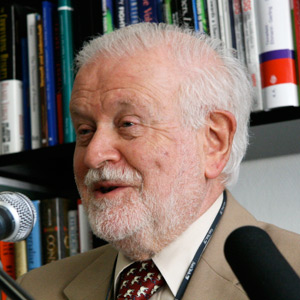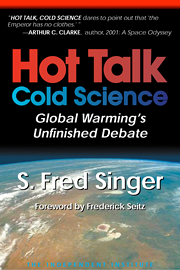An editorial essay by American Chemical Society (ACS) officers Bassam Shakhashiri and Jerry Bell (Science 5 April 2013) extends a gracious invitation for a “respectful conversation” about Climate Change. Yet when I tried to respond, the editors of Science refused to print it. So much for “conversation.”
Aside from its admirable tone, the editorial itself is a mixture of things that are trivially true (i.e., that the climate is changing - indeed it does so, on all time scales, and is likely to continue) to statements contradicted by readily available evidence (that there has been an increase in weather extremes over the past century—contrary to published official statistics). In between, one finds assertions that are still under intense scientific debate.
It is true, unfortunately, that many professional societies, including also the ACS, have issued hastily drawn climate statements, espousing an alarmist view that even exceeds that of the IPCC. In this, they have been joined by many national academies, including the US National Academy of Sciences and the venerable Royal Society. But they all simply regurgitate the shaky conclusions of the UN-IPCC (Intergovernmental Panel on Climate Change)—without adding any original analysis. A notable exception to this lemming-like procession is set by the Chinese Academy of Sciences, which has translated and published the voluminous reports of the NIPCC (Non-governmental International Panel on Climate Change) and even organized a Workshop to discuss its conclusions, which contrast starkly with those of the IPCC.
As an example of ongoing debate: Is the climate really warming, as claimed in the editorial? Hard to tell unless one specifies the time interval. Nearly everyone agrees that the climate is warmer now than during the Little Ice Age (as recently as 200 years ago). Some believe that most of the warming occurred before 1940. Increasingly, many accept that there has been no observed warming for at least the past decade. The situation between 1940 and 2000 is somewhat murky; it all depends on which data set one accepts as truly representing global climate. The ongoing debate on this issue will determine the answer to the key question: How important is the human contribution to climate change?
Many of us find evidence for anthropogenic global warming (AGW) unconvincing. The report of the UN science panel [IPCC 2007] bases it mainly on comparing a single (uncertain) observed temperature set with one calculated from (incomplete and non-validated) climate models driven by (anthropogenic) increases in greenhouse gases, like carbon dioxide.
Even less convincing are earlier IPCC [2001] claims that the 20th century has experienced unusual warming compared to preceding centuries (the so-called ‘Hockeystick’ curve). A recent paper in Science (8 March 2013) has tried to resurrect this particular bit of fiction. [See Another Hockeystick?] But with intense scrutiny after its publication (following the obligatory peer review), the authors now admit that this result is no longer “robust.” There have been many such papers published in prestigious journals in the past 25 years that have all claimed sure proof of AGW—or implied it; it would be good to see them corrected or formally withdrawn.
So what is causing the climate to change—on a human time scale, of decades to centuries? The jury is still out on that particular debate; but increasingly the evidence points to the Sun—and to changes in solar activity. The Science editorial concludes that “reducing emissions [of CO2] is required to avoid a warmer planet.” It would be well to settle the crucial question of the cause before undertaking costly projects to mitigate climate change. Some of these projects—like cellulosic ethanol or ‘carbon capture and sequestration’—have not even been demonstrated on a commercial scale. Good advice would be to “Look before you Leap.”









